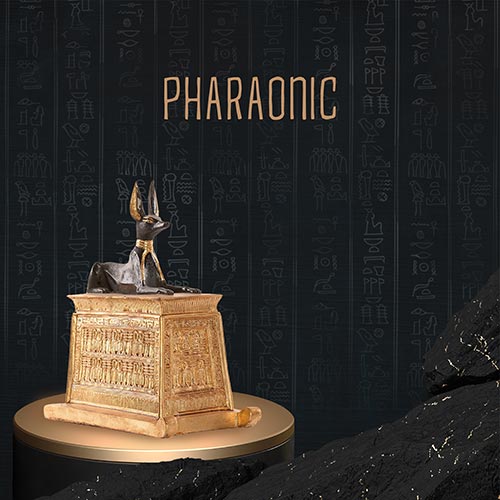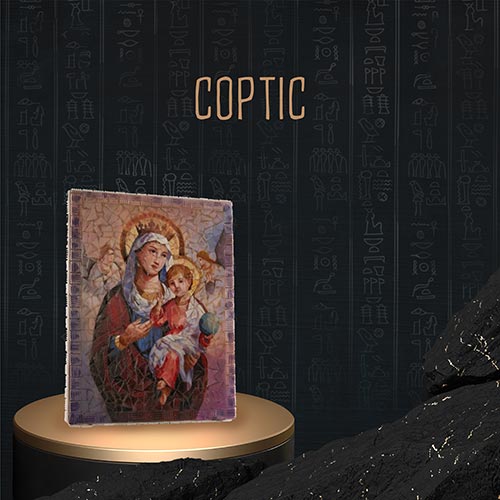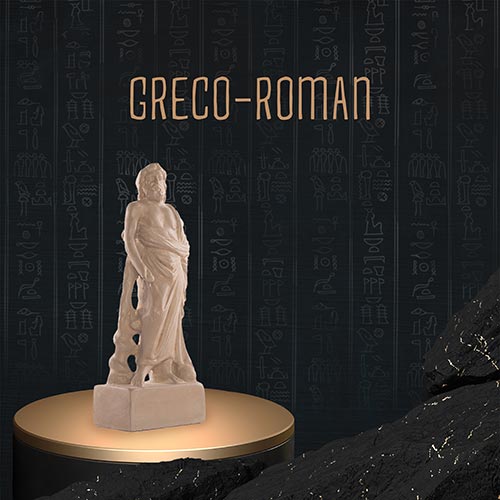Blog
-
September 28, 2025
Alexander the Great of Macedonia (356–323 BCE) was one of history’s most brilliant military leaders and visionaries. Born in Macedon, the son of King Philip II and Queen Olympias, he inherited the throne at the age of 20. Within just over a decade, Alexander the Great’s empire stretched from Greece to Egypt, Persia, and as far as India—making it one of the largest empires of the ancient world. Known for his bold strategies, unshakable ambition, and ability to inspire loyalty, he not only conquered vast lands but also spread Greek culture, ideas, and knowledge across three continents in what came to be called the Hellenistic Age.
Childhood and Early Influences
Alexander grew up in a royal household filled with both power and tension. His father, King Philip II, had transformed Macedon into a formidable military power, but his many marriages created rivalries among potential
-
June 04, 2025
Who is the goddess of love in Egypt?
Among the most beloved goddesses of ancient Egypt, she was known for joy, tenderness, and celestial harmony. Hathor known as the ancient Egyptian goddess of love, music, motherhood, and celebration. She was worshipped not just as a divine presence, but as the embodiment of life’s most beautiful emotions.
Whether you’re drawn to her beauty, her nurturing spirit, or her cultural significance, Hathor’s legacy continues to inspire, and today, you can learn more about her legacy.
Who Is Hathor?
A goddess of extraordinary versatility, Hathor ruled over love, music, dance, joy, fertility, and maternal care. She was also seen as a protector of women and a guide for souls in the afterlife—earning her the revered title “Lady of the West.
Known in ancient Egyptian as
-
May 25, 2025
Cleopatra VII Philopator is one of the most captivating figures of the ancient world. As the last active ruler of the Ptolemaic dynasty, she reigned over Egypt from 51 BC to 30 BC, during a turbulent era marked by civil wars, shifting alliances, and the growing power of Rome. While she's often celebrated for her beauty, Cleopatra's true power lay in her intellect, multilingual skills, and political brilliance.
What are 5 facts about Cleopatra?
- She wasn’t ethnically Egyptian.
Cleopatra descended from the Greek Macedonian line of Ptolemy I, one of Alexander the Great’s generals. Despite this, she fully embraced Egyptian culture and was the first Ptolemaic ruler to speak the Egyptian language. - She ruled with her siblings—and married them.
Following her father Ptolemy XII’s
- She wasn’t ethnically Egyptian.
-
March 12, 2025
On November 1st, 2025, the world will witness a historic moment as the Grand Egyptian Museum (GEM) officially opens its doors to the public. Located near the Giza Pyramids, this architectural masterpiece is set to become the largest archaeological museum dedicated to a single civilization in the world.
Covering an area of 500,000 square meters, GEM is double the size of the Louver and the Metropolitan Museum and two-and-a-half times larger than the British Museum. The museum will house over 100,000 ancient artifacts, many
-
January 21, 2025
Bastet, also known as Bast, is one of ancient Egypt’s most beloved and intriguing deities, Bastet was the daughter of Ra, sister of Sekhmet, the wife of Ptah, and the mother of Mihos. Often depicted as a woman with the head of a lioness or domestic cat, Bastet was revered as a goddess of protection, fertility, and the home. In this blog, we explore Bastet’s role in Egyptian mythology and her connection to other significant deities such as Anubis, Sekhmet, and Hathor. We’ll also answer some of the most frequently asked questions about this iconic Egyptian goddess cat.
-
January 13, 2025
On the edges of the Giza Plateau, the Great Sphinx stands tall, defying time and concealing secrets that date back thousands of years. This legendary statue, carved from a single rock, is not just a symbol of ancient Egyptian civilization but a gateway to realms of mystery and grandeur. Every visitor to this iconic monument cannot help but be captivated by its massive size and exquisite design, embodying the ancient Egyptian creativity.
What Is the Great Sphinx of Giza
-
December 02, 2024
Horus, one of the most venerated gods in ancient Egyptian mythology, is depicted as a falcon-headed deity representing kingship, the sky, and protection. Revered as the son of Isis and Osiris, Horus played a pivotal role in the battle between order and chaos, seeking to avenge his father's death at the hands of his uncle Set. This divine struggle and his ultimate victory over Set cemented Horus's legacy as a symbol of justice, healing, and cosmic balance—a legacy embodied by the Eye of Horus.
The Eye of Horus, with its mysterious allure and enduring power, is one that has fascinated people for centuries. This iconic symbol, also known as the Wedjat eye, holds a deep significance in the rich history of ancient Egypt. As we delve into its fascinating journey through myth and spirituality, you'll discover how it represents the eternal quest for balance and how it might connect to your own life.
-
October 27, 2024
The scarab beetle was held in a place of great profundity in ancient Egypt, ranging from everyday life into the spiritual. Scarabs, formed in the image of the dung beetle, symbolized important notions for the Egyptians, including creation, rebirth, and protection. Because the scarab rolled the dung into balls, which symbolically brought life from waste, it was associated with the journey of the sun across the sky and with the eternal cycle of life. The mystic relation of the beetle to the elevation of life made the scarab a sacred sign in Egyptian culture.
The scarab beetle symbolizes both death and rebirth. Its actions—rolling dung—were seen as a mirror of the sun god Ra moving the sun across the heavens. This imagery embodied the Egyptian belief in the cycle of life, death, and resurrection.
Scarab Protective Powers
In addition to its -
September 16, 2024
The towering obelisks of ancient Egypt have fascinated people for millennia, standing as symbols of power, divinity, and architectural grandeur. These monolithic structures, often intricately carved with hieroglyphs, carry deep cultural and spiritual meanings.
Obelisks were not only symbols of power and authority but also served as astronomical instruments, aligning with celestial bodies like the sun and stars. Their construction was a testament to the advanced engineering and artistic skills of the ancient Egyptians, who were able to quarry, transport, and erect these massive structures with remarkable precision.
This article will answer key questions about Egyptian obelisks by exploring their rich history, symbolic significance, and lasting legacy. Through a detailed examination of their construction, purpose, and impact, we strive to provide a clear understanding of these fascinating monuments and resolve the mysteries that have intrigued scholars for centuries.
-
September 10, 2024
In the pantheon of ancient Egyptian deities, Goddess Sekhmet, the formidable lioness goddess, stands out as a captivating figure. Often depicted as a fierce warrior, Sekhmet also embodies healing and protection, revealing the complex and multifaceted nature of this powerful goddess.
Who is Goddess Sekhmet in Egyptian Mythology?
As the goddess of war, destruction, and disease, Sekhmet was a force to be reckoned with. Her image, often adorned with a red crown and a venomous cobra, instilled fear and reverence in the hearts of both mortals and gods. However, beneath her




